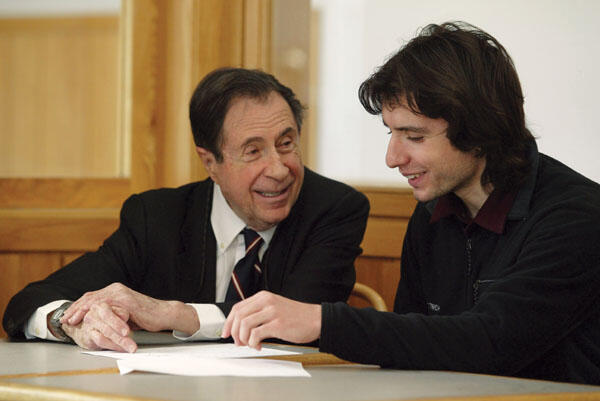Student's proof ends 60 years of math puzzling
Two winners of the Andrew H. Brown Prize in Mathematics, Edward H. Friend ’47 and Andrei Negut ’08, met in Frist Campus Center in February to discuss Negut’s solution of a mathematical problem that had puzzled Friend since his time at Princeton. After learning that Negut had won the Brown prize, awarded to the outstanding junior in mathematics, Friend wrote to Negut to ask if he could provide “an elegant proof” of the following geometry problem, which Friend had been able to prove negatively but not positively: Build on any scalene triangle three triangles with base angles 30 degrees and then connect the vertices of these three triangles and prove the resulting triangle is equilateral. Six weeks later, Friend received a three-page proof from Negut, who said he had been “delighted” to take a break from his algebraic geometry studies. Friend described the exchange as “a link across 60 years of time and reflects the essence of what we have in common.”












1 Response
Lawrence Dresner *59, Jean E. Taylor *73
9 Years AgoProving a theorem
The theorem Andrei Negut ’08 proved for Edward H. Friend ’50 about which you reported (Notebook, April 2) is well known. A proof can be found in College Geometry by Nathan Altshiller-Court, Johnson Publishing Co., 1925. Somewhat different proofs can be found in Problem-Solving Strategies by Arthur Engel, Springer, 2000. Engel (and others, e.g., H.S.M. Coxeter) attributes the problem and its solution to Napoleon Bonaparte.